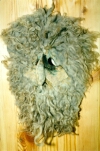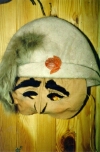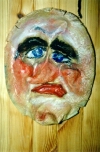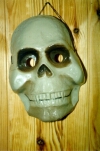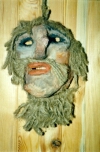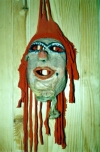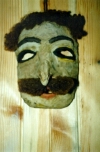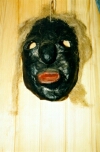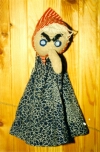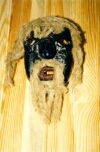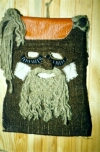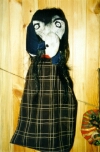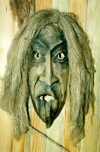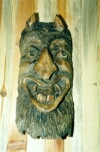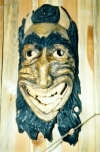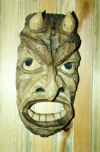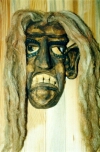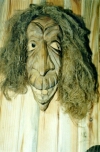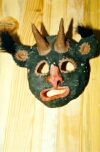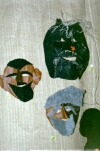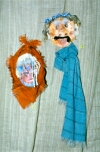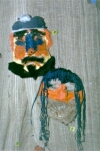LITHUANIAN CUSTOMS AND TRADITIONS |
||||
|
|
SHROVE TUESDAY Shrove Tuesday – not a holiday but is singled out as the day which puts to end meat eating and the time of merrymaking – Tuesday before Lent. At the beginning of this century, in Eastern and South Eastern regions, people celebrated three meat eating days, Sunday, Monday and Tuesday. Visitors to Vilnius’ Academy mentioned that at the beginning of 17th century, Shrove Tuesday carnival walks lasted three days, they were similar to carnivals taking place in other parts of Europe. Information about Shrove Tuesday happenings in the country side shows that in the first part of 19th century, carnivalers dressed up to imitate different nationalities and trades. Shrove Tuesday is a folk celebration not connected with any church rites and only its time is defined by the church calendar, for it depends on the time of Easter. Easter is a moveable feast, from ancient times it is connected to the moon calendar. Shrove Tuesday usually occurs between February 5th and March 8th . The earliest Shrove Tuesday date is celebrating the end of winter. During this celebration attention is concentrated on chasing away winter with all her evils.
These rituals took place in ancient times: 1 – eating enormous amounts of food 2 – ridding through fields and constant visiting 3 – carting around male and female idols and murdering them 4 – masqueraders’ shams 5 – the struggle between winter and spring, wrestling between Fatso [ a.k.a. Lađininis ] and Hemper [ a.k.a..Kanapinis ] 6 – pouring water over everyone 7 – casting and drawing lots On Shrove Tuesday attention is paid to the weather in order to be able to foretell the weather for spring and the rest of the year. It was most important to determine the right time for spring planting, especially for flax. Since Shrove Tuesday is the last day of meat eating period, it obliges people to gorge themselves, they eat as many as twelve times that day, so that they are sated all throughout the year. The ancient food of that day is hodgepodge, [ a.k.a. Điupinys ], made of peas, beans, grits, potatoes with pig’s feet, tail or head. Pig’s tail was very special in this dish. It was said that if he while eating this hodgepodge, was first to find the tail, he would be the first to marry. Others gave the tail to the shepherds so that the pigs would be well herded. Pancakes are the other ritual food. Starting with Thursday, every day till Shrove Tuesday was called a fat day, people ate much meat. No food remained on the table after the meal. The most common Shrove Tuesday tradition was to ride in fields, villages and go visiting neighbors and family. One did not sit at home if a good flax harvest was expected. It was best to ride standing up in the sleigh, to fall overboard and roll in the snow. In the region of Marijampolë, three lads rode around with nut tree whips in their hands, prepared to whip those who poured water on them. Driving through villages they demanded : “ water, water, water! Oi people, water, water!” if no one poured water, they cried: “ we traveled throughout the village and did not receive even a pail of water”. Another Shrove Tuesday tradition was to give rides to bees. Children palyed bees, sat in a tub and made buzzing noises like bees. People poured water on them. Due to this, bees collected copious amounts of honey. In the region of Vilnius, it was tradition on this day for newlyweds to visit family, where they ate pancakes, sausages and meat. This again was to assure a good grain harvest. Youngsters rode sleds down hillsides. Large youth groups collected on higher hilltops. Girls were asked to climb to the top of the highest hill, for this would assure very tall flax growth. In some regions of Dzűkija, youngsters slid downhill on spindles and daughter-in-laws took mother-in-laws for rides on spindles. This once again was done to assure abundant flax crops. Swinging to all heights was another happening with flax growth. Swingers sang, “ he who built swings will have silken flax, however he who built none will have woody flax”. In many regions of Lithuania it was common to soak and wash clothes on Shrove Tuesday. Again, this was done so that linen would be whiter than ever. In order to weave very thin linen fabric, girls made sure that there were no cobwebs in the house, they also spun for a while to assure that there will be soon a visit from the matchmaker. Another traditional Shrove Tuesday event was masqueraders’ strolling about, which had the task of awakening spring and plants. Old writings show that masqueraders wore terifying masks, made from tree barks, sheep skins or animal skulls, all showing brutal hatred. The masks were of strange colors, their beards, eyebrows and hair of horse, dog and even bear hair, mostly brown, black or white. The masks represented elders, beggars, people of different nationalities, birds and animals. They also dresed as devils, angels and symbols of death. At the beginning of 19th an 20th centuries, the struggles between Fatso [ a.k.a.. Lađininis] and Hemper [ a.k.a. Kanapinis ] , were acted outthroughout Lithuania. Fatso symbolizes meat eating and overeating. He was dressed as a fat man. Hemper symbolizes modesty, diligence and fasting. He was slim, raggedy with hemp filament around his hat with a hemp rope and whip in his hands. They push each other, threaten each other until Hemper wins. This struggle took place in streets, yards, even indoors so as to be seen by all. All masqueraders ended Shrove Tuesday strollings taking part in joyful evening games, jokings and dances which continued on till midnight or until roosters’ crowings. L.Jucevičius writes that in Samogitia masqueraders cart about a woman’s idol with huge breasts, called Boba, “ Woman”, “ Morë”, “ Kotrë”. Different regions had different women’s idols, even today on Shrove Tuesday they are carted about all the villages and are burned in the evening in the far end of the village. In the region of Điauliai, the Woman, [ a.k.a. Boba], was a live woman and was dragged about in a wooden trough, giving nuts to children. In the middle of Lithuania, there was a young, live, male idol called “Gavënas”. They tied his hands and legs with straw and adorned his head with ribbons. He was ridden about in many villages, then taken to a barn where he was hung and burned. This was done by removing the straw and ribbons, hanging them on the beams and sometimes setting them on fire. Other regions made this idol entirely of straw and at the end burned or drowned him. On Shrove Tuesday, future conjectures, casting lots were bound with wedding and work successes. On that day young women did the following: took three plates, filled one with soil, placed a ring in another and a wreath of rue in the third one. With covered eyes the young woman selects a plate. If she picks the one with the ring, she will be married soon after Easter. Picking the plate with the wreath of rue, she will remain an old maid and picking the plate with soil means death soon after Easter. Certain works were forbidden on Shrove Tuesday: mending, sewing, hair combing, rope twisting and grindstone milling. Disobeying these bans will bring about summer storms, winds will rip off roofs, chicken will scratch in gardens, meat will have worms and fingers will swell.
|
Exibition of Shrovetide masks in Palanga, 1996.
|
||
| PREVIOUS | ||||


